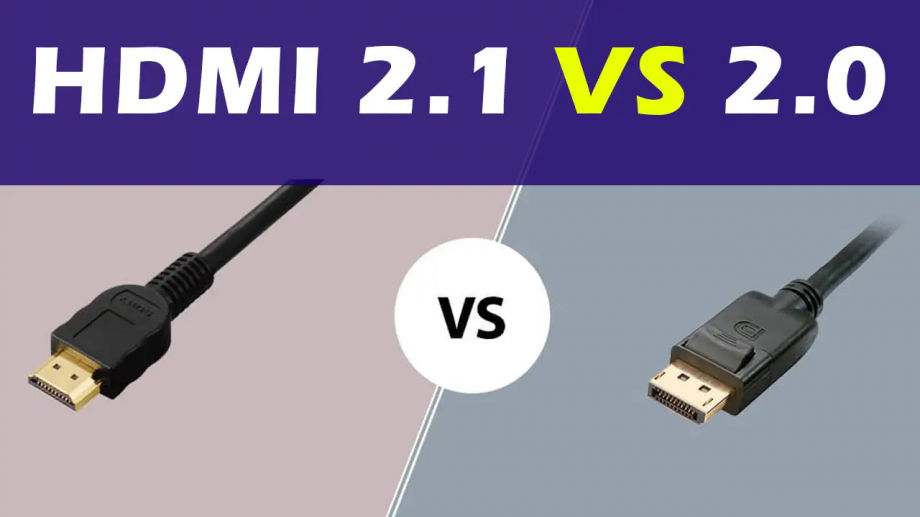In the world of high-definition video and audio, HDMI (High-Definition Multimedia Interface) cables play a crucial role in delivering quality content from devices like gaming consoles, Blu-ray players, and streaming devices to televisions and monitors. With the introduction of HDMI 2.1, many consumers are left wondering whether they should upgrade from HDMI 2.0. This article will explore the differences between HDMI 2.1 and HDMI 2.0, the benefits of each, and which manufacturers provide the best HDMI cables.

Understanding HDMI Versions
What is HDMI 2.0?
HDMI 2.0 was released in 2013 and brought significant improvements over its predecessor, HDMI 1.4. It supports a maximum bandwidth of 18 Gbps, allowing for 4K video at 60 frames per second (fps). This version also introduced support for 32 audio channels, enhanced audio return channel (ARC), and the ability to transmit 4K video at 60Hz, making it suitable for most modern home entertainment systems. The introduction of HDMI 2.0 marked a pivotal moment in the evolution of home entertainment, as it enabled consumers to enjoy high-quality video and audio without the need for multiple cables. This version became the standard for many devices, ensuring compatibility across a wide range of products.
What is HDMI 2.1?
HDMI 2.1, released in late 2017, takes a giant leap forward with a maximum bandwidth of 48 Gbps. This increase allows for higher resolutions and refresh rates, including 8K video at 60Hz and 4K video at 120Hz. HDMI 2.1 also introduces features like Dynamic HDR, which adjusts the picture quality on a scene-by-scene basis, and Variable Refresh Rate (VRR), which reduces screen tearing in gaming. The advancements in HDMI 2.1 cater to the growing demand for higher-quality content and immersive experiences, particularly in gaming and home theater setups. As technology continues to evolve, HDMI 2.1 positions itself as a future-proof solution for consumers looking to enhance their viewing experiences.
Key Differences Between HDMI 2.1 and HDMI 2.0
Bandwidth and Resolution
The most significant difference between HDMI 2.1 and HDMI 2.0 is the bandwidth. HDMI 2.0 supports up to 18 Gbps, while HDMI 2.1 supports up to 48 Gbps. This increase in bandwidth allows HDMI 2.1 to support higher resolutions and refresh rates, making it ideal for gamers and those who want the best picture quality. The ability to transmit 8K video at 60Hz and 4K video at 120Hz means that HDMI 2.1 is not just about higher resolutions; it also enhances the overall fluidity and responsiveness of the content being displayed. This is particularly important for fast-paced action scenes in movies and competitive gaming, where every frame counts.
| Feature | HDMI 2.0 | HDMI 2.1 |
|---|---|---|
| Maximum Bandwidth | 18 Gbps | 48 Gbps |
| Maximum Resolution | 4K @ 60Hz | 8K @ 60Hz, 4K @ 120Hz |
| Dynamic HDR | No | Yes |
| Variable Refresh Rate | No | Yes |
| Enhanced Audio Return Channel | Yes | Yes |
Audio Capabilities
HDMI 2.1 also enhances audio capabilities with the introduction of eARC (Enhanced Audio Return Channel), which allows for higher-quality audio formats like Dolby Atmos and DTS:X to be transmitted back to the audio system. While HDMI 2.0 supports ARC, it is limited in the audio formats it can handle. This improvement is particularly beneficial for home theater enthusiasts who want to experience immersive soundscapes that match the high-quality visuals provided by 4K and 8K content. With eARC, users can enjoy lossless audio formats that deliver a more cinematic experience, making it a crucial feature for anyone serious about their audio setup.
Gaming Features
For gamers, HDMI 2.1 offers several features that enhance the gaming experience. VRR helps eliminate screen tearing, while Auto Low Latency Mode (ALLM) automatically switches the display to low latency mode when a game is detected. These features are not available in HDMI 2.0, making HDMI 2.1 the better choice for gaming enthusiasts. The ability to enjoy smoother gameplay and reduced input lag can significantly impact performance in competitive gaming scenarios. Additionally, features like Quick Frame Transport (QFT) reduce latency even further, ensuring that gamers have the most responsive experience possible.
Do You Really Need HDMI 2.1?
The decision to upgrade to HDMI 2.1 largely depends on your specific needs and the devices you own. If you have a 4K TV and are primarily using it for streaming or watching movies, HDMI 2.0 may suffice. However, if you own a next-gen gaming console like the PlayStation 5 or Xbox Series X, or if you plan to invest in an 8K TV, HDMI 2.1 is the way to go. The growing library of 8K content and the capabilities of new gaming consoles make HDMI 2.1 a worthwhile investment for those looking to future-proof their entertainment systems.
Future-Proofing Your Setup
Investing in HDMI 2.1 cables can be seen as future-proofing your home entertainment system. As more content becomes available in 8K and as gaming technology continues to advance, having HDMI 2.1 will ensure that you can take full advantage of these developments. This forward-thinking approach not only enhances your current setup but also prepares you for the inevitable advancements in technology. By choosing HDMI 2.1, you are making a choice that will serve you well for years to come, allowing you to enjoy the latest innovations in video and audio quality.
Choosing the Right HDMI Cable Manufacturer
When it comes to HDMI cables, not all manufacturers are created equal. Here are some reputable HDMI cable manufacturers known for their quality products:
1. Cable Matters
Cable Matters offers a wide range of HDMI cables, including both HDMI 2.0 and HDMI 2.1 options. Their cables are known for their durability and performance, making them a popular choice among consumers. With a focus on high-quality materials and construction, Cable Matters ensures that their cables can handle the demands of high-bandwidth applications, providing reliable performance for both casual users and professionals alike.
2. AmazonBasics
For those looking for budget-friendly options, AmazonBasics provides reliable HDMI cables that meet HDMI 2.0 specifications. While they may not offer the advanced features of HDMI 2.1, they are a solid choice for everyday use. AmazonBasics has gained a reputation for delivering quality products at an affordable price, making it accessible for consumers who want dependable performance without breaking the bank.
3. Belkin
Belkin is a well-known brand in the electronics industry, offering high-quality HDMI cables that support both HDMI 2.0 and 2.1. Their cables are designed for optimal performance and are often recommended for high-end setups. Belkin's commitment to innovation and quality ensures that their products meet the needs of consumers who demand the best from their home entertainment systems.
4. Monster
Monster cables are known for their premium quality and performance. They offer a range of HDMI cables that support HDMI 2.1, making them suitable for high-resolution video and audio applications. Monster's reputation for excellence in audio and video cables has made them a trusted choice for audiophiles and videophiles alike, ensuring that users can enjoy the highest quality content available.
5. Mediabridge
Mediabridge provides a variety of HDMI cables that are well-reviewed for their performance and reliability. They offer both HDMI 2.0 and 2.1 options, catering to different consumer needs. With a focus on customer satisfaction and product quality, Mediabridge has established itself as a reputable manufacturer in the HDMI cable market, providing users with dependable solutions for their home entertainment setups.

Conclusion
In summary, the choice between HDMI 2.1 and HDMI 2.0 depends on your specific needs and the devices you plan to use. HDMI 2.1 offers significant advantages in terms of bandwidth, resolution, and gaming features, making it the better choice for those looking to future-proof their home entertainment systems. When selecting an HDMI cable, consider reputable manufacturers like Cable Matters, AmazonBasics, Belkin, Monster, and Mediabridge to ensure you get a quality product. By making an informed decision, you can enhance your viewing experience and enjoy the latest advancements in audio and video technology.
Frequently Asked Questions
1. What is the main difference between HDMI 2.0 and HDMI 2.1?
The main difference is the bandwidth; HDMI 2.0 supports up to 18 Gbps, while HDMI 2.1 supports up to 48 Gbps, allowing for higher resolutions and refresh rates.
2. Do I need HDMI 2.1 for gaming?
If you are using a next-gen gaming console or plan to play games in 4K at high refresh rates, HDMI 2.1 is recommended for the best experience.
3. Can I use an HDMI 2.1 cable with HDMI 2.0 devices?
Yes, HDMI 2.1 cables are backward compatible with HDMI 2.0 devices, but you will be limited to the capabilities of the HDMI 2.0 standard.
4. What are the benefits of eARC in HDMI 2.1?
eARC allows for higher-quality audio formats to be transmitted back to the audio system, enhancing the overall audio experience.
5. Which HDMI cable manufacturer is the best?
Reputable manufacturers include Cable Matters, Belkin, Monster, and Mediabridge, known for their quality and performance.






